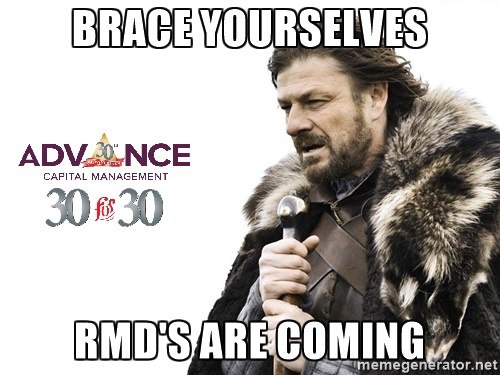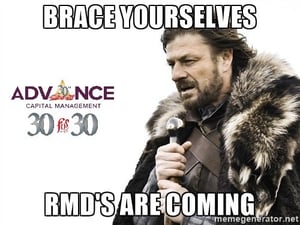Search for topics or resources
Enter your search below and hit enter or click the search icon.
March 29th, 2017 | 1 min. read

 This year, the oldest of the nation’s 75 million baby boomers turn 70 ½ years old and begin annual withdrawals from their tax-sheltered retirement accounts, according to this article published in The Wall Street Journal. They are also required to pay taxes on those distributions.
This year, the oldest of the nation’s 75 million baby boomers turn 70 ½ years old and begin annual withdrawals from their tax-sheltered retirement accounts, according to this article published in The Wall Street Journal. They are also required to pay taxes on those distributions.
These withdrawals are known as required minimum distributions (RMDs). Essentially, RMDs were enacted into U.S. law to prevent people from never paying taxes on their retirement savings.
RMDs can create some headaches for retirees. They can force people to withdraw more from their savings than they would prefer and result in unwanted taxes.
To ensure a smooth transition across the 70 ½ threshold, it’s important to understand RMD rules. In this video, financial adviser Sean McDonnell provides the “FAQs” on RMDs.
CORRECTION: The video states that RMDs are not required for Roth 401(k) accounts. In fact, Roth 401(k) accounts are subject to RMDs, but not taxes. However, Traditional and Roth 401(k) accounts are exempt from RMDs if you are actively working and the account is part of your current employer's plan. We apologize for any inconvenience.
Advance Capital Management is a fee-only RIA serving clients across the country. The Advance Capital Team includes financial advisers, investment managers, client service professionals and more -- all dedicated to helping people pursue their financial goals.